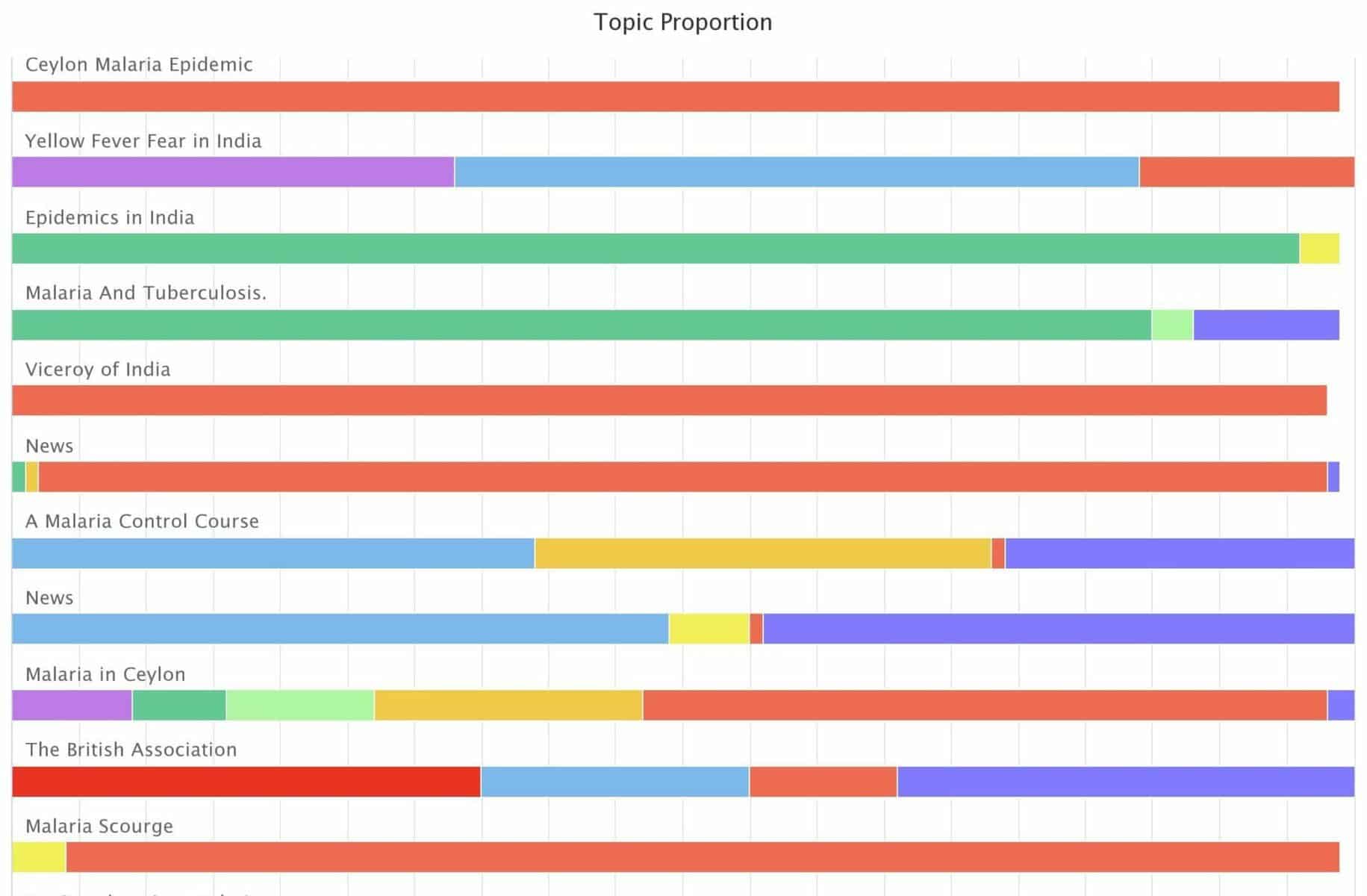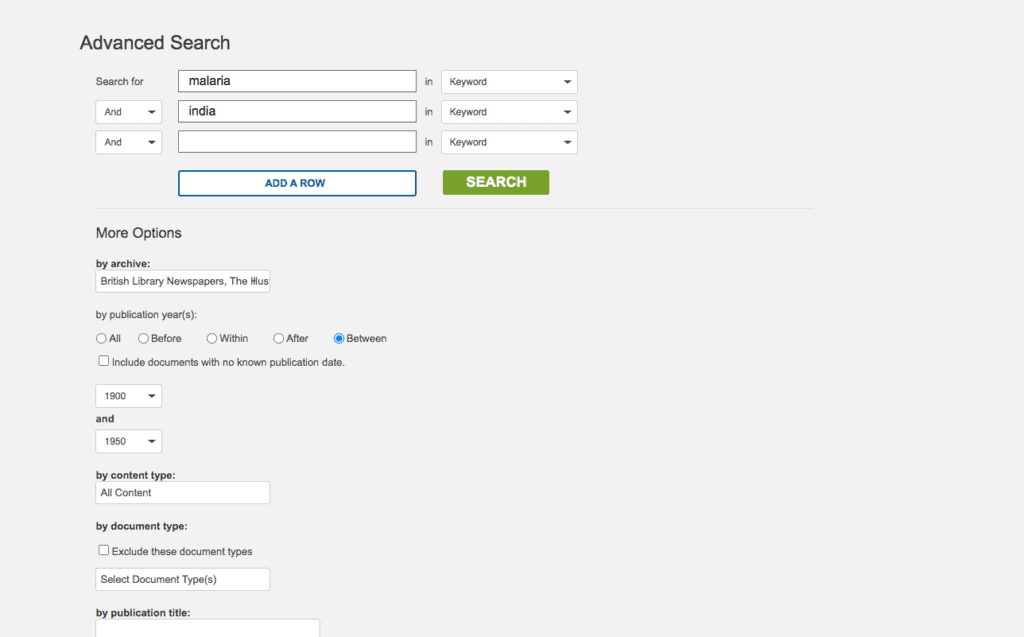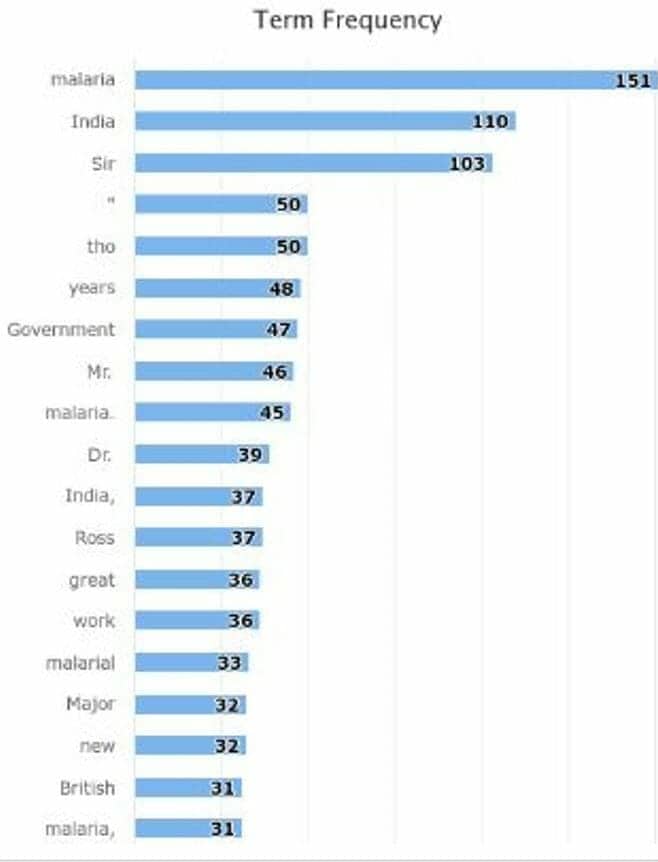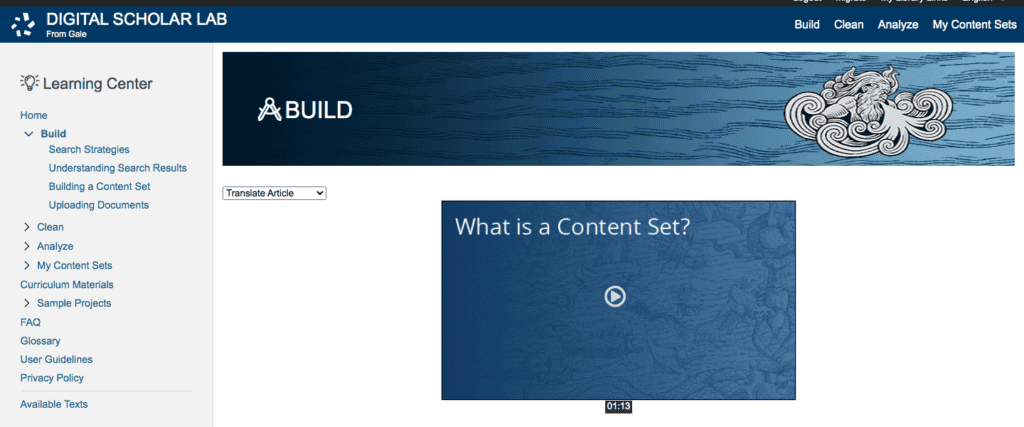│By Jagyoseni Mandal, Gale Ambassador at the University of Oxford│
The global pandemic that hit us last year and continues to affect numerous aspects of life has made research particularly difficult. I can say this from personal experience, as I have had to study for more than a term at my home in India, where I am stuck because of COVID, rather than studying at my university in Oxford. This situation risked affecting both my mental health and my studies; I felt I was running out of both time and resources for my research. But discovering the Gale Digital Scholar Lab has been a revelation, opening up a whole new area of potential research to me, and it is accessible entirely remotely. In this post I am going to share how the Gale Digital Scholar Lab made Digital Humanities accessible to me; how the various tools in helped me in my research and led me to discover more topics around my area of interest.
Researching the malaria epidemic in India
As a PhD researcher in the History of Science and Medicine with a specific interest in infectious disease, I was intrigued, finding myself living in the midst of a pandemic, to see what I could learn by exploring how society responded to an epidemic almost a century ago. I went to the Gale Digital Scholar Lab and used the Advanced Search tool, inputting the keywords “malaria” and “India”. The Advanced Search tool is great because it also allows you to choose the archives you want to include in your search and specify a time period. For example, I looked at how malaria and India were covered in four newspaper archives – British Library Newspapers, The Illustrated London News, The Telegraph and The Times – during the colonial years of 1900-1950. I chose these keywords because, being from India myself, this is a disease that I am familiar with and which continues to affect people in my country. There has also been a significant focus in medical research on malaria, as the epidemic was the principal cause of mortality in colonial India after cholera, taking millions of lives.
I ran this search to see what the significant trends were in the response to and treatment of malaria. It yielded 233 results. These sources are also available through Gale Primary Sources, but the Gale Digital Scholar Lab helped further develop my research via the help of three analysis tools.
Named Entity Recognition Tool
First, I used the Named Entity Recognition Tool which algorithmically identifies “entities” (people, places and things) within my Content Set, many of which would be useful to open up avenues for my research. I found that in the category “Person” the name of Sir Ronald Ross, a British medical officer in India, appeared a significant number of times. This discovery could help focus my research, and I could use this to read Sir Ronald Ross’s views of the epidemic in these newspapers, or in any other sources to which I have access. Ross eventually went on to receive the Nobel Prize for being the first medical practitioner to demonstrate that the malarial parasite was transmitted by the bite of infected mosquitoes. Interestingly, he built his concept of the lifecycle of malarial parasites and malarial transmissions in birds not humans.
Topic Modelling Tool
Next, I used the Topic Modelling tool to uncover recurring themes and trends within my content set. Topic Modelling runs an algorithm many times across a defined Content Set, bringing together groups of words that commonly co-occur in the text to form thematic “topics”. Topic Modelling is a great way to make sense of a large set of unstructured data – as the diagram below shows, Topic 4 is related to Indian governmental responses, including partnerships with the British army, in response to the epidemic. In this topic I found the word “sanitation” occurred ten times in eight documents which reaffirmed my preliminary assumption that sanitation was a major topic of discussion in relation to malaria in colonial India.
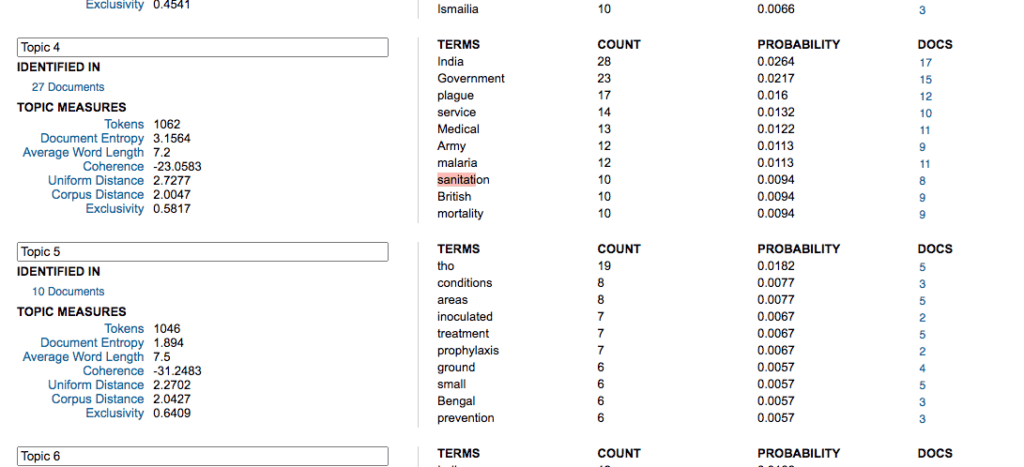
Furthermore, the Topic Proportion feature (below) within the Topic Modelling tool helped me identify the Ceylon Malaria Epidemic emerging as the most discussed topic in the newspapers under my consideration. This made me realise that I could potentially use the Ceylon Malaria Epidemic which occurred between 1934-1935 as a specific case study for a paper. These archives would also help me get an idea about the response of the various authorities in dealing with the disease.
N-Gram Tool
Last I used the N-Gram tool (below), and through the bar chart visualisation found that Sir Ronald Ross’s name appeared thirty-seven times which again made me intrigued to read his write-ups in the newspapers of the period. I had learned from the Learning Center in the Gale Digital Scholar Lab that N-Gram analysis can be used to help determine if a Content Set contains specific terminology or phrases. Without such a tool it would have taken me ages to trace this manually (as it would have involved intensive reading of 233 documents). Despite never having used this tool before, running the analysis took just a few minutes.
What was incredible in this entire process was that I found three very specific themes I could work on by only starting with two very generic keywords – and all within a few minutes. Through the process I also got to know the archives available to me, which I could easily access through Gale Primary Sources or the Gale Digital Scholar Lab. It not only saved me time but allowed me to regain a sense of control of my research, and a sense of excitement at the potential, both of which was refreshing given my previous anxieties about undertaking research during a pandemic.
Whilst I was initially intimidated by the idea of Digital Humanities, the Gale Digital Scholar Lab made it seem far less daunting to me. The Learning Center (see below) was particularly helpful in allowing me to get a handle on DH, and how it might help my research. I hope you found this brief insight into the Gale Digital Scholar Lab useful. I wanted to share my experiences because I know there are lots of other researchers who might find themselves in a similar situation right now, who may also find the Lab will make their job easier and provide inspiration just as it did for me.
If you enjoyed reading about how the Gale Digital Scholar Lab showed me new avenues of research, you may like:

